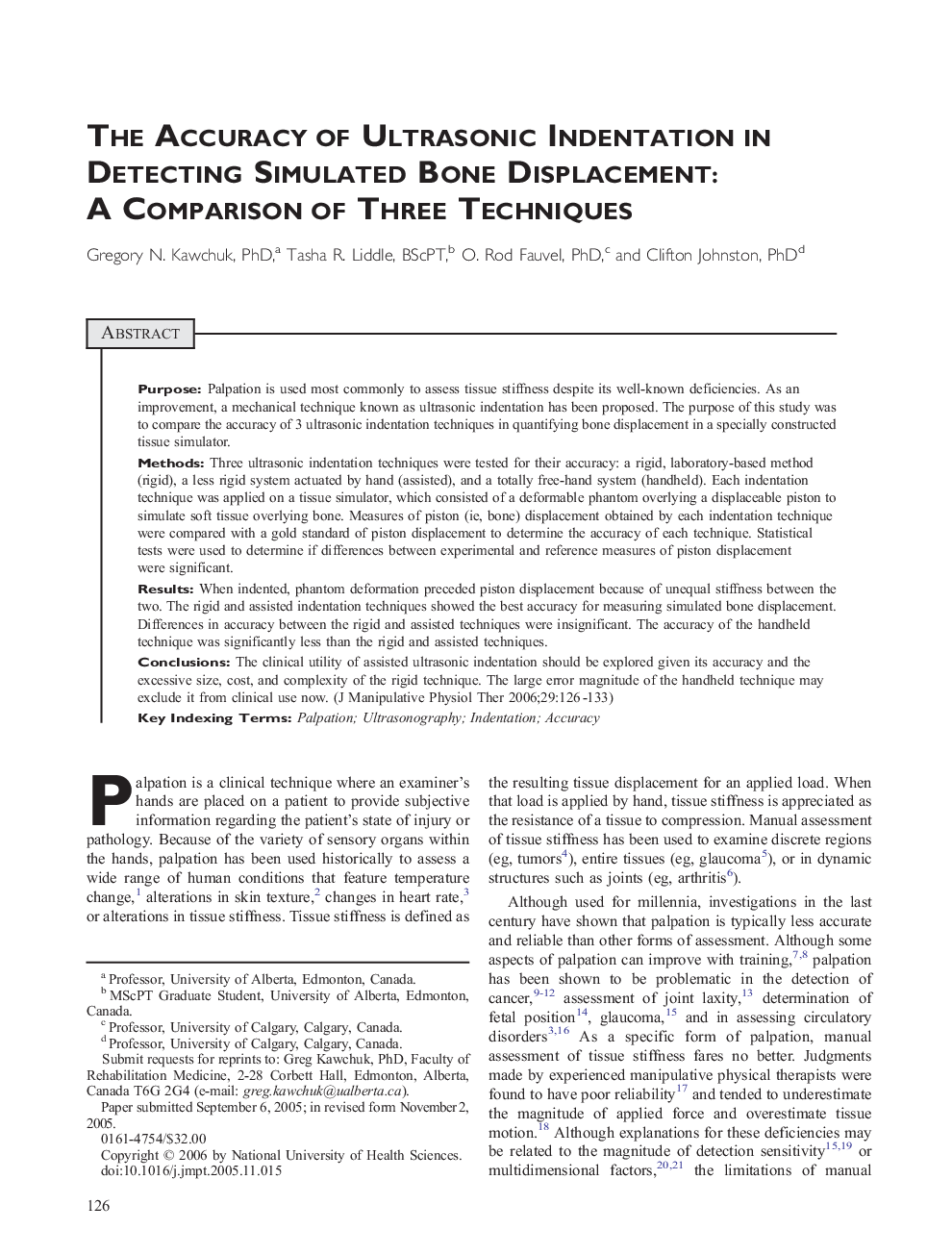| Article ID | Journal | Published Year | Pages | File Type |
|---|---|---|---|---|
| 2621631 | Journal of Manipulative and Physiological Therapeutics | 2006 | 8 Pages |
PurposePalpation is used most commonly to assess tissue stiffness despite its well-known deficiencies. As an improvement, a mechanical technique known as ultrasonic indentation has been proposed. The purpose of this study was to compare the accuracy of 3 ultrasonic indentation techniques in quantifying bone displacement in a specially constructed tissue simulator.MethodsThree ultrasonic indentation techniques were tested for their accuracy: a rigid, laboratory-based method (rigid), a less rigid system actuated by hand (assisted), and a totally free-hand system (handheld). Each indentation technique was applied on a tissue simulator, which consisted of a deformable phantom overlying a displaceable piston to simulate soft tissue overlying bone. Measures of piston (ie, bone) displacement obtained by each indentation technique were compared with a gold standard of piston displacement to determine the accuracy of each technique. Statistical tests were used to determine if differences between experimental and reference measures of piston displacement were significant.ResultsWhen indented, phantom deformation preceded piston displacement because of unequal stiffness between the two. The rigid and assisted indentation techniques showed the best accuracy for measuring simulated bone displacement. Differences in accuracy between the rigid and assisted techniques were insignificant. The accuracy of the handheld technique was significantly less than the rigid and assisted techniques.ConclusionsThe clinical utility of assisted ultrasonic indentation should be explored given its accuracy and the excessive size, cost, and complexity of the rigid technique. The large error magnitude of the handheld technique may exclude it from clinical use now.
